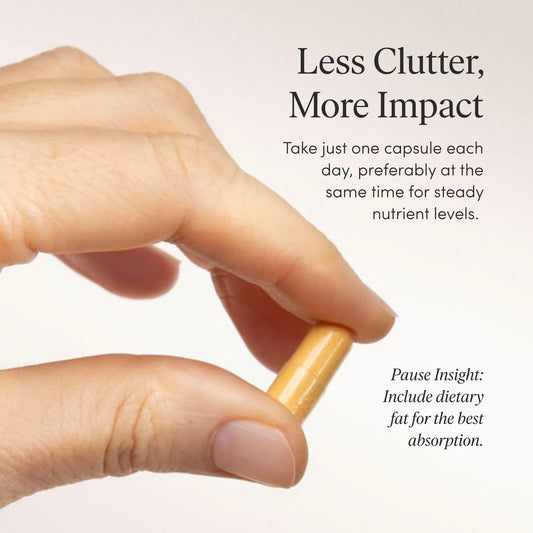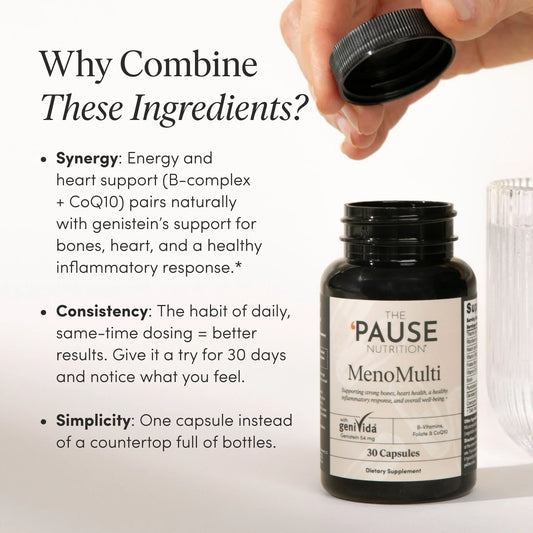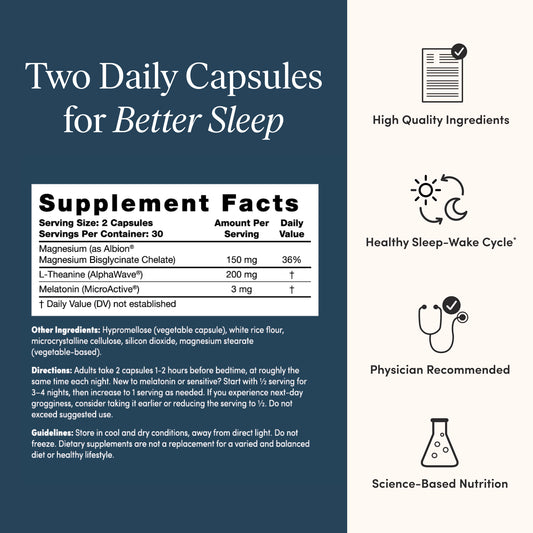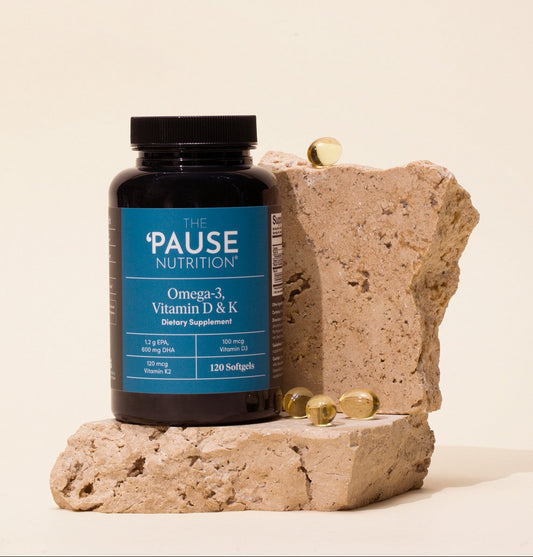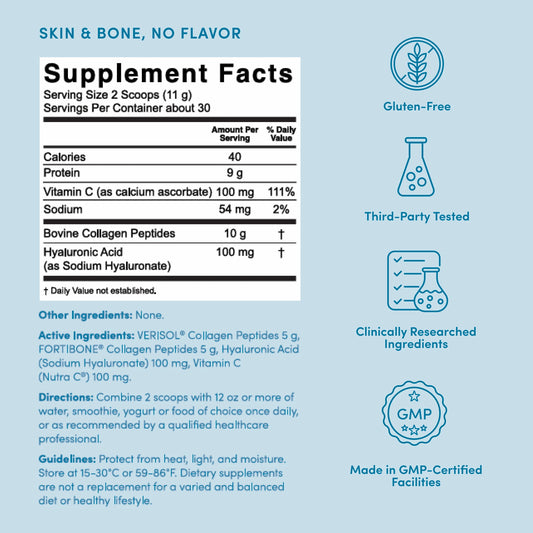The Fabulous Four Challenge

Share
If you have not tried this tip, it just might change your life...
If you are struggling with weight loss, especially in middle-age, and you feel that you have done everything people have told you to do, and nothing is working, try this tip: STOP COUNTING CALORIES.
Yes. You read that correctly. I am asking you to stop counting calories, just for a few weeks. Trust me. If you are reading this, calorie counting is likely not working for you.
Here are the important facts to remember:
All calories are not created equal in terms of health.
It's critical to distinguish between quantity and quality. Even meals with the same calorie count might have extremely varied nutritional qualities and have distinct health consequences. Furthermore, nutrient-dense meals like fresh fruits and vegetables have been related to a decreased mortality risk.
Aside from their impact on health outcomes, different nutrients have distinct effects on the mechanics that control your weight: metabolism, hormone levels, hunger, and appetite.
The purpose of this exercise is NOT to become supplement dependent. Supplements are essential to many people, but they cannot replace excellent nutrition gained through whole foods. Supplements are meant to supplement a nutritious diet.
If your physician has recommended a supplement, continue to utilize this as prescribed, but do not track it for this exercise. The goal of the exercise is for you to use FOOD for nutrition, not supplements.
CHALLENGE INSTRUCTIONS:
1. Go to the App Store and download a free nutrition tracker; my favorite is CRONOMETER.
2. Most of these apps were developed to track calories or macronutrients, and I do not want you to do that.
3. I want you to track 4 nutrients: fiber, magnesium, omega-3 fatty acids, and vitamin D.
4. After you track them for a week, I want you to choose nutrition (not supplements) that will raise you to 100% of the recommended daily intake for each nutrient.
5. Do not count calories or macros: just nutrients. The tracker should have the recommended daily intake (RDI) loaded into the app. If you currently take a supplement, do not track them.
6. Not only will you lose weight, but you will gain health benefits that will blow your mind.
"What is the magic? Good nutrition trumps calories every time."
The 4 nutrients to track and the foods that are rich in these nutrients
Fiber
A diet high in fiber has been linked to a variety of health advantages. Soluble fiber is found to reduce cholesterol by attaching to bile (which is made up of cholesterol) and removing it from the body. This removal might assist in lowering your risk of heart disease. A high-fiber meal slows food digestion in the intestines, which may help reduce blood sugar levels from increasing too quickly. A high-fiber diet may help you feel fuller for longer, reducing overeating and hunger between meals.
The Academy of Nutrition and Dietetics recommends consuming about 25-35 grams (g) of total fiber per day, with 10-15 grams from soluble fiber or 14g of fiber per 1,000 calories.
Fiber Content of Common Foods
Breads
| Bread | Serving Size | Fiber Content |
| Bagel (whole wheat) | 3 1/2 inches | Total fiber: 3 g Soluble fiber: 1 g |
| Light white/wheat | 2 slices | Total fiber: 1 g Soluble fiber: trace |
| Pita (whole wheat) | 7 inches | Total fiber: 4 g Soluble fiber: 1 g |
| Pumpernickel | 1 slice | Total fiber: 3 g Soluble fiber: 1 g |
| Whole wheat | 1 slice | Total fiber: 2 g Soluble fiber: trace |
| Rye | 1 slice | Total fiber: 2 g Soluble fiber: 1 g |
Grains
| Grain | Serving Size | Fiber Content |
| Barley | 1/2 cup cooked | Total fiber: 4 g Soluble fiber: 1 g |
| Brown rice | 1/2 cup | Total fiber: 2 g Soluble fiber: trace |
| Pasta (whole wheat) | 1/2 cup cooked | Total fiber: 3 g Soluble fiber: 1 g |
| Quinoa | 1/2 cup cooked | Total fiber: 2 g Soluble fiber: 1 g |
| Lentil pasta | 1/2 cup cooked | Total fiber: 6 g Soluble fiber: 2 g |
| Edamame pasta | 1/2 cup cooked | Total fiber: 6 g Soluble fiber: 3 g |
Legumes & Starchy Vegetables
| Vegetable | Serving Size | Fiber Content |
| Garbanzo beans | 1/2 cup | Total fiber: 4 g Soluble fiber: 1 g |
| Kidney beans | 1/2 cup | Total fiber: 6 g Soluble fiber: 3 g |
| Lentils | 1/2 cup | Total fiber: 5 g Soluble fiber: 1 g |
| Potato (with skin) | 1 medium | Total fiber: 3 g Soluble fiber: 1 g |
| Sweet potatoes | 1/2 cup cooked | Total fiber: 4 g Soluble fiber: 2 g |
| Squash (winter) | 1/2 cup | Total fiber: 3 g Soluble fiber: 2 g |
| Green peas (cooked) | 1/2 cup | Total fiber: 4 g Soluble fiber: 1 g |
| Lima beans | 1/2 cup | Total fiber: 7 g Soluble fiber: 3 g |
Nuts & Seeds
| Nut/Seed | Serving Size | Fiber Content |
| Almonds | 1/4 cup | Total fiber: 3 g Soluble fiber: 1 g |
| Peanuts | 1/4 cup | Total fiber: 3 g Soluble fiber: 1 g |
| Sunflower seeds | 1/4 cup | Total fiber: 3 g Soluble fiber: 1 g |
| Walnuts | 1/4 cup | Total fiber: 2 g Soluble fiber: trace |
| Flaxseed (ground) | 2 tbsp | Total fiber: 4 g Soluble fiber: 2 g |
| Chia seeds | 2 tbsp | Total fiber: 10 g Soluble fiber: 7 g |
| Hemp seeds | 2 tbsp | Total fiber: 2 g Soluble fiber: 1 g |
Fruit
| Fruit | Serving Size | Fiber Content |
| Apple (w/ skin) | 1 medium | Total fiber: 3 g Soluble fiber: 1 g |
| Banana | 1 medium | Total fiber: 2 g Soluble fiber: 1 g |
| Blueberries | 1 cup | Total fiber: 2 g Soluble fiber: trace |
| Grapefruit | 1/2 cup | Total fiber: 1 g Soluble fiber: 1 g |
| Orange | 1 medium | Total fiber: 3 g Soluble fiber: 2 g |
| Pear (w/ skin) | 1 medium | Total fiber: 4 g Soluble fiber: 2 g |
| Prunes | 3 | Total fiber: 2 g Soluble fiber: 1 g |
| Strawberries | 1 cup | Total fiber: 4 g Soluble fiber: 1 g |
Vegetables (non-starchy)
| Vegetable | Serving Size | Fiber Content |
| Broccoli | 1/2 cup | Total fiber: 3 g Soluble fiber: 1 g |
| Brussel sprouts | 1/2 cup | Total fiber: 4 g Soluble fiber: 2 g |
| Cabbage (green) | 1 cup (fresh) | Total fiber: 2 g Soluble fiber: 1 g |
| Carrots | 1/2 cup, cooked | Total fiber: 2 g Soluble fiber: 1 g |
| Cauliflower | 1/2 cup, cooked | Total fiber: 1 g Soluble fiber: trace |
| Green beans | 1/2 cup | Total fiber: 2 g Soluble fiber: 1 g |
| Kale | 1/2 cup | Total fiber: 3 g Soluble fiber: 1 g |
| Spinach | 1/2 cup | Total fiber: 2 g Soluble fiber: 1 g |
| Squash (zucchini) | 1/2 cup | Total fiber: 1 g Soluble fiber: 1 g |
Magnesium
Magnesium is a mineral found in soil, the sea, plants, animals, and people.
Magnesium is present in your bones and makes up for about 60% of your body's magnesium, while the remainder is found in muscles, soft tissues, and fluids, including blood.
It plays a role in over 600 bodily responses. Magnesium assists in the conversion of food into energy assists in the synthesis of new proteins from amino acids, assists in the creation and repair of DNA and RNA, is a component of muscle contraction and relaxation, and finally, regulates neurotransmitters, which convey messages throughout your brain and neurological system.
Unfortunately, research shows that nearly half of people in the United States and Europe consume less magnesium than is advised daily.
Recommended Daily Dose of Magnesium = 320 milligrams (mg) per day
Foods Rich in Magnesium
| Food | Serving Size | Magnesium Content |
| Apple | 1 medium | 9 mg |
| Almonds | 1 oz (dry roasted) | 80 mg |
| Avocado | 1 cup (cubed) | 44 mg |
| Banana | 1 cup | 44 mg |
| Beef (90% lean) | 3 oz (ground) | 20 mg |
| Black beans | 1/2 cup | 60 mg |
| Bread (whole wheat) | 2 slices | 46 mg |
| Breakfast cereal (fortified) | 10% fortification | 40 mg |
| Broccoli | 1/2 cup (cooked) | 12 mg |
| Carrot | 1 medium (raw) | 7 mg |
| Cashews | 1 oz (dry roasted) | 74 mg |
| Cereal (shredded wheat) | 2 large biscuits | 61 mg |
| Chicken breast | 3 oz (roasted) | 22 mg |
| Cocoa powder (unsweetened) | 1 tbsp | 27 mg |
| Dark chocolate (60% cacoa) | 1 oz | 50 mg |
| Edemame (shelled) | 1/2 cup (cooked) | 50 mg |
| Halibut | 3 oz (cooked) | 24 mg |
| Kidney beans | 1/2 cup | 35 mg |
| Milk | 1 cup | 24-27 mg |
| Oatmeal (instant) | 1 packet | 36 mg |
| Peanut butter | 2 tbsp | 49 mg |
| Peanuts | 1/4 cup (oil roasted) | 63 mg |
| Pumpkin seeds (in shell) | 1 oz | 74 mg |
| Pumpkin seed kernels | 1 oz | 168 mg |
| Potato (with skin) | 3.5 oz (baked) | 43 mg |
| Raisins | 1/2 cup | 23 mg |
| Rice (brown) | 1/2 cup | 42 mg |
| Rice (white) | 1/2 cup | 10 mg |
| Salmon (Atlantic, farmed) | 3 oz | 26 mg |
| Soy milk | 1 cup | 61 mg |
| Spinach | 1/2 cup (boiled) | 78 mg |
| Yogurt (low fat, plain) | 8 oz | 42 mg |
Omega-3 Fatty Acids
Omega-3 fatty acids are nutrients obtained from food (or supplements) that aid in developing and maintaining a healthy body. They play an important role in the construction of every cell wall you have. They also serve as an energy source and aid in the proper functioning of your heart, lungs, blood vessels, and immune system.
EPA and DHA are important because they are only present in specific fish. Another omega-3 fatty acid, ALA (alpha-linolenic acid), is found in plant sources such as nuts and seeds.
DHA is particularly abundant in the retina (eye), brain, and sperm cells.
These fatty acids are not only necessary for your body to operate, but they also provide significant health advantages.
According to the American Heart Association, patients without a history of heart disease should consume at least two meals of fish each week (a total of 6-8 ounces). A variety of fish is recommended. Omega-3 fatty acids are abundant in cold-water wild fish such as mackerel, tuna, salmon, sardines, and herring.
Even if you use medicine to decrease your triglyceride levels, you may need to eat additional foods that are high in omega-3 fatty acids if you have high triglyceride levels. Your doctor may also recommend that you take a fish oil supplement. For individuals with excessive triglyceride levels, 2-4 grams of EPA + DHA per day is suggested. Triglyceride levels have been found to be reduced by 25 to 35 percent when this quantity is consumed.
Triglyceride levels can be reduced using fish oil. You're at risk for heart disease and stroke if your blood fat levels are too high.
Rheumatoid arthritis is a kind of arthritis in which the body's joints become inflamed. Supplementing with fish oil (EPA+DHA) may help to alleviate joint stiffness and discomfort. Anti-inflammatory medications' efficacy appears to be boosted by omega-3 supplementation.
According to several studies, societies that consume meals high in omega-3 fatty acids have reduced depression rates. Fish oil supplements have a mixed record when it comes to depression. More study is required to see if it makes a difference.
The growth of a child's infants' visual and brain development appears to be dependent on DHA.
Inflammation, a fundamental component of asthma, is reduced by eating a diet rich in omega-3 fatty acids. However, additional research is needed to determine whether fish oil supplements enhance lung function or reduce the quantity of medicine required to manage the disease.
According to research, fish oil can help certain children with ADHD symptoms by improving their mental functions such as thinking, remembering, and learning. More research is needed, and omega-3 supplements should not be utilized as first-line therapy.
Omega-3 fatty acids may help protect against Alzheimer's disease and dementia, as well as having a beneficial effect on aging-related memory decline, according to some studies.
Recommended Weekly Dose of Omega-3 Fatty Acids = 2 - 3 servings of fish per week
Amount of Omega-3 Fatty Acids in Selected Fish and Seafood
| Seafood | Serving Size | Omega-3 Fatty Acid Content |
| Anchovy | 3 oz | 1.4 g |
| Bluefish | 3 oz | 1.2 g |
| Halibut | 3 oz | 0.9 g |
| Herring | 3 oz | 1.3 - 2 g |
| Lake Trout | 3 oz | 2 g |
| Lake White Fish | 3 oz | 1.5 g |
| Mackeral | 3 oz | 2.5 - 2.6 g |
| Salmon (wild) | 3 oz | 1.8 g |
| Sea Bass | 3 oz | 0.65 g |
| Striped Bass | 3 oz | 0.8 g |
| Tuna (Albacore) | 3 oz | 1.5 g |
| Tuna (Bluefin) | 3 oz | 1.2 g |
| Tuna (white meat canned) | 3 oz (drained) | 0.5 g |
What if I have a fish allergy or refuse to eat fish?
Although fish is the finest source of omega-3 fatty acids, ALA may also be found in a variety of plants. Although this is not a very high source of omega-3 fatty acids, some research suggests that ALA may help to lower the risk of cardiovascular disease.
Ground or milled flaxseeds, flaxseed oil, chia seeds, walnuts, soy foods, and canola oil are all excellent sources of ALA. Algal or algae oil, which is broken down to DHA, is another source of ALA. Algae oil is used in a lot of omega-3 fortified meals. These are fantastic alternatives for vegetarians who don't eat seafood.
There are no serving size recommendations for ALA-rich foods at this time. However, including these items in your diet can help you lose weight.
Vitamin D
Vitamin D is generated in your skin in reaction to sunlight. It's a fat-soluble vitamin that belongs to the same family as vitamins D-1, D-2, and D-3.
When your skin is physically exposed to sunshine, your body generates vitamin D naturally. To guarantee appropriate amounts of the vitamin in your blood, you may also receive it through specific meals and supplements.
Vitamin D serves a variety of purposes. The regulation of calcium and phosphorus intake and the facilitation of proper immune system function are perhaps the most important. Vitamin D is necessary for proper bone and tooth growth and development and enhanced resistance to some illnesses.
You're at danger of developing bone abnormalities like soft bones (osteomalacia) or brittle bones if your body doesn't obtain enough vitamin D. (osteoporosis).
Vitamin D has also been shown to fight disease, reduce depression, and aid in weight loss in overweight individuals.
Recommended Daily Dose of Vitamin D = 600 IU or 15 micrograms (mcg) per day
Foods Rich in Vitamin D
| Food | Serving Size | Vitamin D Content |
| Cereal | 10% fortified | 2 mcg |
| Cod liver oil | 1 tbsp | 34 mcg |
| Egg | 1 (scrambled) | 1.1 mcg |
| Liver (beef) | 3 oz (braised) | 1 mcg |
| Milk (2%, vitamin D) | 1 cup | 2.9 mcg |
| Milk (soy, almond & oat) | 1 cup | 2.5 - 3.6 mcg |
| Mushrooms (white, exposed to UV light) | 1/2 cup (raw) | 9.2 mcg |
| Salmon (sockeye) | 3 oz (cooked) | 14.2 mcg |
| Sardines (Atlantic, canned) | 2 sardines (drained) | 1.2 mcg |
| Trout (Rainbow, farmed) | 3 oz (cooked) | 16.2 mcg |
| Tuna (light, canned) | 3 oz (drained) | 1 mcg |
This article contains affiliate links.
Sources
https://ods.od.nih.gov/factsheets/Magnesium-HealthProfessional/
https://ods.od.nih.gov/factsheets/VitaminD-HealthProfessional/
https://ods.od.nih.gov/factsheets/Omega3FattyAcids-HealthProfessional/
https://www.hsph.harvard.edu/nutritionsource/carbohydrates/fiber/


















